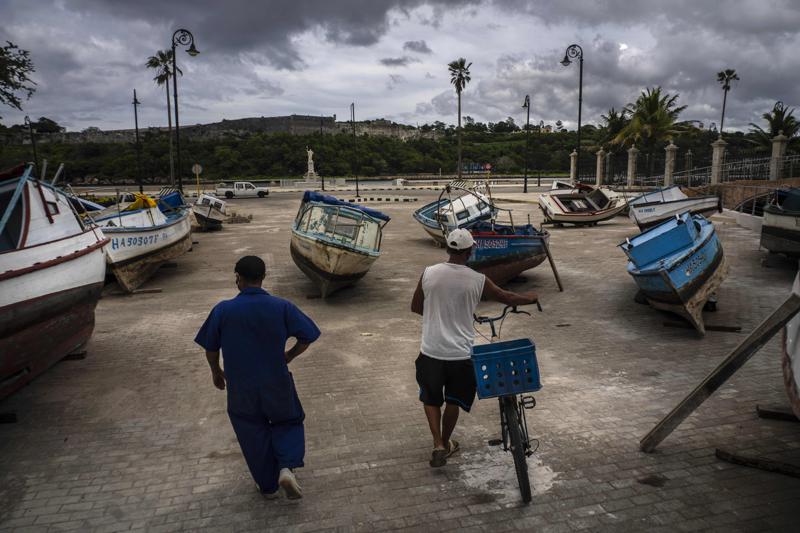
The conditions in southern Florida have begun to deteriorate as Tropical Storm Elsa took aim at the Florida Keys early Tuesday, prompting a hurricane watch for portions of the west coast of state, according to the National Hurricane Center.
In addition to damaging winds and heavy rains, the Miami-based center said the peninsula was in danger of life-threatening storm surges, flooding and isolated tornadoes. A hurricane watch was issued for the west-central and Big Bend coast of Florida from Egmont Key to the Steinhatchee River.
Three to 5 inches of rainfall with localized maximum totals of up to 8 inches of rain are expected through Wednesday across the Keys and into southwest and western portions of the Florida Peninsula. A few tornadoes are possible across south Florida Tuesday morning and across the Florida Peninsula later in the day, the center forecasted.
Gov. Ron DeSantis on Monday expanded an existing state of emergency to cover a dozen counties that span an area of Florida where Elsa is expected to make a swift passage on Wednesday and President Joe Biden approved an Emergency Declaration for the state ahead of the storm.
A ramped-up rescue effort at the collapsed South Florida condo building faced new threats from the weather as the tropical storm approached the state. On Monday, lightning forced crews to pause the search for victims of the June 24 collapse in Surfside and a garage area in the rubble filled with water, officials said.
Elsa’s maximum sustained winds strengthened to 60 mph early Tuesday. A slow strengthening is forecast through Tuesday night and Elsa could be near hurricane strength before it makes landfall in Florida. It is expected to weaken after it moves inland. Its core was about 50 miles southwest of Key West, Florida, and 270 miles south of Tampa. It was continuing to move to the north-northwest at 12 mph.
Elsa made landfall in Cuba on Monday afternoon near Cienega de Zapata, a natural park with few inhabitants. It headed northwestward across the island, passing Havana just to the east. Rainfall of 5 to 10 inches with isolated maximum amounts of 15 inches are expected Tuesday across portions of Cuba which will result in significant flash flooding and mudslides.
There were no early reports of serious damage as Elsa passed over Cuba.
“The wind is blowing hard and there is a lot of rain. Some water is getting under the door of my house. In the yard the level is high, but it did not get into the house,” Lázaro Ramón Sosa, a craftsman and photographer who lives in the town of Cienega de Zapata, said by telephone.
Sosa said he saw some avocado trees fall nearby.
Elsa had spent Sunday and much of Monday sweeping parallel to Cuba’s southern coast before heading on to land, sparing most of the island from significant effects. As a precaution, Cuban officials had evacuated 180,000 people against the possibility of heavy flooding from a storm that already battered several Caribbean islands, killing at least three people.
Tropical storm warnings were posted for the Florida Keys from Craig Key westward to the Dry Tortugas and for the west coast of Florida from Flamingo northward to the Ochlockonee River.
A Tropical Storm Watch has been issued for the Georgia coast and portions of the South Carolina coast from the Mouth of St. Marys River to South Santee River, South Carolina.
Tropical storm conditions should continue over portions of central and western Cuba during the next several hours. Tropical storm conditions are beginning in the warning area in the Florida Keys and are expected along the Florida west coast later Tuesday.
Elsa was the first hurricane of the Atlantic season until Saturday morning and caused widespread damage on several eastern Caribbean islands Friday. As a tropical storm, it resulted in the deaths of one person on St. Lucia and of a 15-year-old boy and a 75-year-old woman in separate events in the Dominican Republic.
Elsa is the earliest fifth-named storm on record, said Brian McNoldy, a hurricane researcher at the University of Miami.



